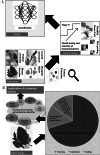The pipelines of deep learning-based plant image processing
- PMID: 40735612
- PMCID: PMC12304785
- DOI: 10.1017/qpb.2025.10018
The pipelines of deep learning-based plant image processing
Abstract
Recent advancements in data science and artificial intelligence have significantly transformed plant sciences, particularly through the integration of image recognition and deep learning technologies. These innovations have profoundly impacted various aspects of plant research, including species identification, disease detection, cellular signaling analysis, and growth monitoring. This review summarizes the latest computational tools and methodologies used in these areas. We emphasize the importance of data acquisition and preprocessing, discussing techniques such as high-resolution imaging and unmanned aerial vehicle (UAV) photography, along with image enhancement methods like cropping and scaling. Additionally, we review feature extraction techniques like colour histograms and texture analysis, which are essential for plant identification and health assessment. Finally, we discuss emerging trends, challenges, and future directions, offering insights into the applications of these technologies in advancing plant science research and practical implementations.
Keywords: data science; deep learning; feature extraction; image recognition; machine learning.
© The Author(s) 2025.
Conflict of interest statement
None.
Figures



References
-
- Ahmad, I. , Hamid, M. , Yousaf, S. , Shah, S. T. , & Ahmad, M. O. (2020). Optimizing pretrained convolutional neural networks for tomato leaf disease detection. Complexity, 2020(1), 8812019. 10.1109/ACCESS.2021.3119655 - DOI
-
- Ahmad, M. , Abdullah, M. , Moon, H. , & Han, D. (2021). Plant disease detection in imbalanced datasets using efficient convolutional neural networks with stepwise transfer learning. IEEE Access, 9, 140565–140580. 10.1109/ACCESS.2021.3119655 - DOI
Publication types
LinkOut - more resources
Full Text Sources
